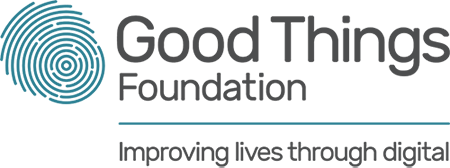Does every request for a new course have a nicely defined scope and clear learning objectives? Do you never have requests to add ‘just this’ to almost ready courses? Do your subject matter experts always stick to just the things people need to know?
No? Join the club! In this post, Kevin Maye explains how Good Things Foundation collaborates with customers and subject matter experts together to keep their courseware concise.
I love Cathy Moore and her Action Mapping method for developing learning materials.
This is how I interpret her techniques.


Step 1 - Share everything
Technically there is a step before this of getting the right people together in a room. To be clear you need some subject matter experts (SME’s – 2 or 3 to ensure good coverage). You also need representatives of the audience (more than the SME’s in the room).
When that group comes together, in a real or virtual room, the first exercise is to record everything they could teach someone about the topic. In a real room it’s all about post-its (online use Jamboard, Miro or similar)
Anyone that’s read Cathy Moore will know this is a bad idea. Cathy tells us to focus on specific behaviours and prioritise those. I’ll explain later why I’ve already gone ‘off-piste’.
Step 2 - Sifting and sorting
When you’ve finished getting ALL the ideas out of peoples heads it’s time to start organising them. This might take a while and the steps will vary depending on how many post-its you have. Look for duplicates (put them together), natural groupings (put them close by each other). Consider different levels or types of things (whoever is leading this organises it how they see fit).
Notice I still haven’t removed any of the post-its/ideas, so there’s still loads more than we could cope with in an elearning course.So the next step is to cut out anything that isn’t essential and this is when the audience becomes most important. What do they HAVE to know/do?
If your SME’s say something is vital but your audience members say they’ve done the job for months and never heard of it, the audience member wins.
You might need to explore what’s so important about it with the SME’s but for now, it’s outside of the course. NOTE if your SME can prove the point is essential (maybe the audience not doing this one thing is the cause of poor productivity) then you can bring it back later.
Apply that to everything and you should have a more manageable list of stuff to go into the course. Keep that safe and take a picture of it so no one can argue later what was in.
Step 3 - Ideas that don’t make the cut
You also have a lot (probably more) stuff that didn’t make the essential list. What do you do with those?
Each of these items that didn’t make it into the learning piece needs to be addressed. That might just mean making a list of each item and why it didn’t make the selection.
Or you might want some curated resources about an item. Or create a PDF with background information about one of the items.
The point is that for everything that isn’t in the elearning course you have something to point to explaining how it’s addressed or why it’s not. When the inevitable question from someone not at the initial mapping session arrives, here are your answers.
If you have time to do this with your experts and customers even better. They’re then involved and invested in these alternatives and are less likely to undermine the decisions later.
Step 4 - Explore what made the cut
Once you’ve worked out how to deal with what’s not part of your solution it’s time to start fleshing out the details of what is. I like to get my audience members and SME’s working together to explore small specific items – individual skills in Cathy Moore’s world.
From there I’ll look to develop storyboards, build up scripts and identify scenarios that can be included in the elearning to keep it active and engaging. I haven’t got space in this post to cover all that, but the eLearning Network has an interactive webinar series where you can pick up great ideas.
That’s the essence of how I keep elearning courses concise, on topic and avoid waffle. Join me on the 14th April to explore in more detail along with real-world examples.



